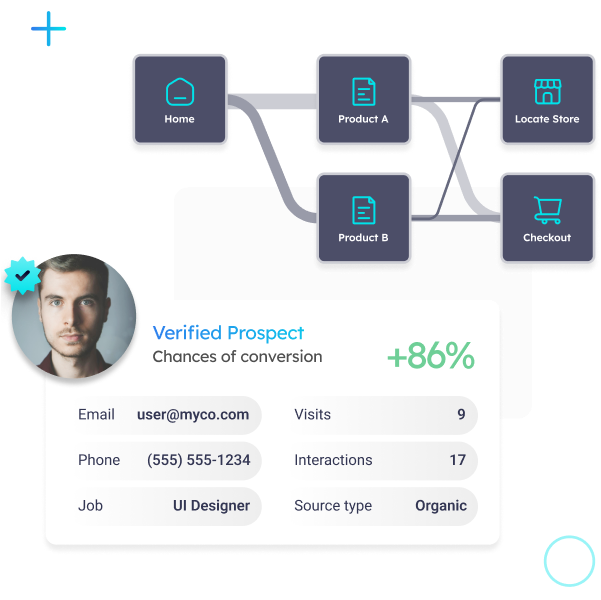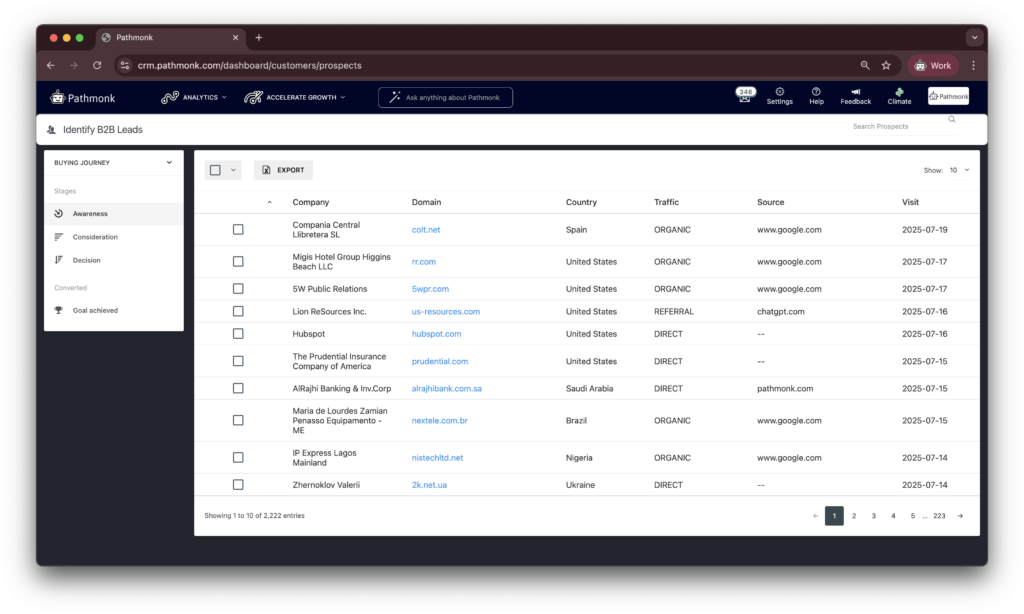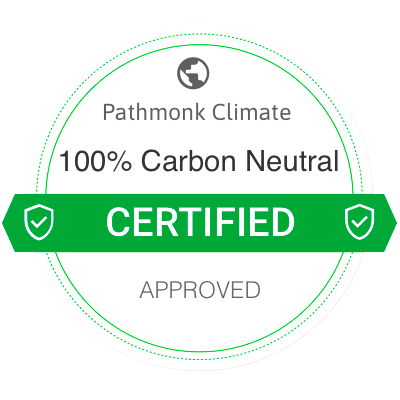If you’re working in the sales or marketing team of a B2B company, you’re probably under pressure to bring in higher-quality leads, shorten sales cycles, and close bigger deals. At some point, if you’re not doing it yet, someone on your team will suggest Account-Based Marketing.
And they’re not wrong.
ABM has become one of the most talked-about B2B strategies in the past decade, for good reason. Companies using ABM generate 208% more revenue for their marketing efforts compared to those that don’t. It’s also been linked to 30% higher deal close rates and stronger alignment between sales and marketing.
But here’s the reality: most ABM programs never deliver those kinds of results. They stall out because the strategy wasn’t built to match how buyers actually make decisions in complex B2B environments. Instead of focused, relevant outreach, teams fall into a pattern of mass outreach with a few tweaks to a subject line or landing page and call it “personalization.”
Meanwhile, sales keeps chasing accounts that were “engaged” but never actually had intent.
So no, ABM isn’t broken. But how most teams approach it is.
In this guide, we’ll walk through how to build an ABM program that actually works. That means knowing when ABM makes sense, how to define and prioritize target accounts, what tech and content you actually need, and how to keep marketing and sales operating like one team, instead of two departments with overlapping slide decks (shocking, right?)
Table of Contents
If you’re an ABM marketer, you will love this
What most ABM programs get wrong
ABM sounds great on paper. You identify high-value accounts, tailor your outreach, and win bigger deals faster. But when you look at how it’s actually implemented across most companies, the disconnect is obvious.
Let’s break down the most common reasons ABM efforts fall flat.
1. Trying to personalize everything, instead of the right things
A lot of teams waste hours tweaking subject lines, rewording LinkedIn messages, or swapping logos on PDFs, while ignoring what really matters: timing, relevance, and offer. Personalization isn’t about saying “Hi {{first name}}” or changing the industry on a landing page, but about understanding where that account is in their buying journey and what problem they’re trying to solve.
If you don’t have insight into their intent or timing, all that surface-level personalization won’t do much.
2. Treating ABM like a campaign, not a strategy
ABM isn’t a one-off play. It’s not something you “launch in Q2” and forget about by Q3. If you treat it like a campaign, with a fixed start and end date, you’ll probably burn through budget targeting accounts that weren’t ready, with no long-term system to learn or improve.
ABM only works when it’s built into your broader GTM strategy: from how you define your ICP to how you hand off warm accounts to sales.
3. Picking accounts without a clear why
Too many teams build target account lists by pulling a list of Fortune 500 logos or going after companies that look big enough to buy. But ABM isn’t just enterprise sales with a nice lipstick. If there’s no clear reason why a company should be on your list, and no signal that they’re even remotely in-market, you’re just spending more to get ignored faster.
Account selection should be based on fit and intent. That means looking at firmographics, historical conversion data, tech stack, and real buying behavior. Not just aspirational logos.
4. No alignment between sales and marketing
This is probably the single biggest reason ABM fails. If sales doesn’t trust the accounts marketing is targeting, or if marketing doesn’t have visibility into what happens after the first call, you’re done before you start.
ABM only works when there’s shared ownership. That means sales and marketing define the target accounts together, agree on what success looks like, and build a feedback loop to refine the approach over time.
Without that, you’ll end up with campaigns that get clicks but no pipeline, and weekly meetings full of finger-pointing (and we don’t want that, do we?)
5. Overcomplicating the tech too early
The ABM software landscape is huge, and expensive. If you’re just getting started, layering on three new tools before you’ve even nailed your ICP or messaging is a waste of time and budget.
You don’t need a fully integrated orchestration platform on day one. You need a CRM that can track engagement by account, a way to identify intent signals, and a clear view of what’s working. That’s it.
Once you have a working process, you can add sophistication. But if you start with complexity, you’ll drown in setup and never get to value.
Understand when ABM is (and isn’t) the right strategy
Before you start building target lists or brainstorming personalized campaigns, you need to answer a basic question: Is ABM the right fit for your business right now?
A lot of teams skip this step. They jump into ABM because it sounds more strategic than “just running paid ads,” or because they’re trying to impress the board. But ABM isn’t always the right tool, and forcing it into the wrong context usually leads to wasted time, budget, and headcount.
So let’s look at when ABM does make sense, and when you’re better off with another approach.
ABM makes sense when:
- You’re selling to a clearly defined audience: ABM isn’t built for mass market or long-tail plays. It’s built for situations where you know who your ideal customers are — and they know they have a problem you can solve. If you can describe your best-fit accounts by industry, size, tech stack, business model, or behavior, ABM gives you a way to focus effort where it matters most.
- Your deals are high-value and involve multiple stakeholders: If your average contract value is over five figures, or your deals typically involve 4–8 decision-makers, ABM starts to pay off. It gives you a way to reach those people with relevant content, coordinate touches across channels, and move the account forward as a whole — not just chase individual leads.
- Your sales cycle is long and consultative: ABM works best when buying decisions take time. If you’re selling something with a 90-day+ cycle, complex onboarding, or high perceived risk, personalized outreach and content can help build trust across the journey. But if your product is self-serve, PLG, or transactional, ABM is probably overkill.
- You already have some traction: ABM isn’t a way to “get your first customers.” You need a working product, a defined ICP, and some baseline conversion data before you can segment and target effectively. If you’re still trying to figure out who your buyer is, ABM will just make that confusion more expensive.
ABM isn’t a good fit when:
- You’re trying to drive volume, not precision: If your business depends on a large number of mid- or low-value deals, ABM won’t scale efficiently. You’re better off optimizing inbound or running broader paid campaigns with solid segmentation. Trying to personalize outreach to 3,000 SMBs will burn your team out in weeks.
- You don’t have the resources to follow through: ABM isn’t just about building a list — it’s about acting on it. If your sales team doesn’t have time to do meaningful outreach, or your content team can’t support targeted assets, you won’t see results. A lean, focused demand gen strategy will serve you better until you can support ABM properly.
- You don’t have account-level insight: You can’t run ABM without knowing which accounts are engaging, who’s showing intent, and how they’re interacting with your assets. If you can’t track that, or your CRM is a mess, ABM will feel like throwing darts in the dark.
The ABM spectrum: one-to-one, one-to-few, one-to-many
Not all ABM strategies look the same. And honestly, a lot of teams get stuck trying to do too much personalization at scale. Instead, think of ABM as a spectrum:
- One-to-one ABM: Full customization for a handful of high-value accounts. Every touchpoint is tailored. Sales and marketing work almost like an account team. Best used when the deal size justifies the effort.
- One-to-few ABM: Targeted outreach to small clusters of accounts (5–50) with shared traits. Messaging is tailored by segment. Think: industry-specific campaigns or job-role-specific nurture tracks.
- One-to-many ABM: Broader plays across hundreds of accounts that fit your ICP. Personalization happens at the experience layer: ads, website content, etc. Requires stronger data and automation, but it’s scalable.
The mistake? Trying to treat all your target accounts like one-to-one accounts when you don’t have the bandwidth. Be honest about what you can support, and tier your ABM accordingly.
Step 1: Align your internal team
We said it before: if marketing and sales aren’t operating from the same playbook, don’t bother with ABM. It’ll just turn into two teams running parallel efforts, duplicating work, and blaming each other.
And don’t think alignment is just a kick-off meeting. It’s a working relationship with shared goals, shared inputs, and shared accountability.
Here’s how to build that from the start.
Start with your ICP, but get specific
Most companies think they have an ICP. Something like: “mid-market B2B SaaS companies in North America with 50–500 employees.”
That’s not an ICP, that’s a filter on LinkedIn Sales Navigator.
You need to get more granular, and you need sales and marketing in the room together when defining it.
What you’re looking for:
- Which industries tend to convert fastest?
- What tech stack signals a stronger fit?
- Are there certain roles or buying committees that tend to accelerate deals?
- What behaviors or triggers signal readiness (e.g. hiring for a specific role, new funding, attending a webinar)?
If sales says a company is a good fit, but marketing has no way of identifying that fit ahead of time, there’s a gap. And that gap will blow up your targeting efforts.
So have the conversation early. Bring real deal data. And come out of it with a set of observable traits that both teams use to qualify target accounts.
Free template: buyer persona
Create professional, customizable buyer personas in minutes with our intuitive free template.

Define what counts as success
If marketing is optimizing for engagement and sales is optimizing for closed revenue, no one wins.
You need a clear chain of metrics that both sides agree on:
- How many target accounts do we want to reach this quarter?
- What does qualified engagement look like?
- When should a marketing-qualified account be passed to sales?
- What’s the follow-up SLA?
- How will we track meetings, pipeline, and revenue from ABM efforts?
Don’t assume this alignment exists. Even experienced teams often realize they’re using the same words to mean different things. Define the metrics, document the handoff points, and make sure everyone can see performance in the same dashboard.
Set roles and responsibilities
You don’t need a huge team to run ABM. But you do need clarity on who’s doing what.
For example:
- Marketing owns ICP definition, account list building, campaign execution, and engagement tracking.
- Sales owns outreach, qualification, follow-up, and closing.
- RevOps supports with data hygiene, reporting, and routing.
- Leadership aligns strategy, removes blockers, and ensures accountability.
Without clearly defined roles, everything gets stuck. SDRs think marketing is sending the first emails. Marketing waits for sales to approve the list. No one follows up. You lose weeks.
Get ahead of this with a simple roles doc. One page is enough. If someone new joins the team, they should be able to read that page and know exactly how your ABM process runs.
Build a feedback loop (not just a post-mortem)
If sales and marketing need to operate as a tight loop, then that means sales shares what’s landing in calls, which objections are coming up, and which accounts are going cold, and marketing adapts messaging, targeting, and content accordingly.
But that won’t happen on its own. You need a system.
Set a recurring meeting. It can be biweekly. The goal is not to report on performance, the dashboard already does that. The goal is to exchange qualitative feedback while it’s still actionable.
Some questions to guide that session:
- Which accounts have been the most engaged? Why?
- What messaging is resonating in conversations?
- Are there patterns in who’s ghosting or dropping off?
- Are there gaps in content, collateral, or follow-up that we can fix?
This is how you iterate fast and stay coordinated.
Once your team is aligned, your ICP is clear, and your responsibilities are mapped, then you’re ready to start building your target account list, which is where most ABM programs start, and where most go off track immediately.
Step 2: Build your target account list
Most ABM programs start here. But without the alignment work from the previous step, this list usually turns into a mix of “cool logos we wish we could close” and “accounts sales already gave up on.”
To be clear: your target account list is the backbone of your entire ABM program. Everything else, from content to outreach to measurement, depends on the quality of this list.
So don’t rush it. And definitely don’t outsource it to a third-party platform before you’ve done the thinking yourself.
Start with your ICP and apply hard filters
If you did the alignment work right, you already have a shared definition of your ICP, not just in theory, but with clear, observable traits.
Now you need to translate that into actual filters.
Some starting points:
- Firmographic filters: industry, company size (by headcount or revenue), geography, business model (B2B vs B2C), funding stage
- Technographic filters: tools in use (e.g. Salesforce, HubSpot, Snowflake), cloud provider, integrations
- Behavioral filters: job postings, content engagement, event attendance, hiring trends
- Existing CRM data: historical win rates by segment, average deal size, sales velocity
Run a data pull that’s as tight as possible while still giving you enough accounts to work with. If your list is too short, loosen filters one at a time — and always discuss tradeoffs with sales.
Use tiers to manage effort and scale
Not all target accounts are equal, so if you try to treat them like they are, you’ll either burn out your team or dilute your efforts.
Use a tiering model to break your list into manageable levels of personalization and investment:
- Tier 1 (one-to-one): Strategic accounts. Full personalization. These get dedicated plays, custom content, and close coordination with AEs.
- Tier 2 (one-to-few): High-potential accounts grouped by shared traits. Segmented messaging and tailored offers, but more scalable execution.
- Tier 3 (one-to-many): Broad ICP-fit accounts. Programmatic targeting via ads, content syndication, and light personalization layers (e.g. website content or ad copy).
How many accounts per tier? It depends on your team’s capacity, your average deal size, and your sales process. But here’s a rough benchmark:
- Tier 1: 5–25 accounts
- Tier 2: 50–200 accounts
- Tier 3: 500+ accounts (but only if you have the systems to track and act on them)
If you’re early in your ABM journey, keep it tight. You can always expand once you’ve validated what works.
Blend fit and intent
You don’t just want good fit accounts. You want in-market accounts.
A company might be a perfect ICP match, but if they just renewed with your competitor or haven’t shown any buying signals, they’re not a near-term opportunity.
That’s why your list should combine:
- Fit: Do they match the ICP criteria?
- Intent: Are they actively researching your category or related topics?
You can get intent data from tools like Bombora, 6sense, or Demandbase, or from lower-cost signals like:
- Website visits (especially product, pricing, or solution pages)
- Ad engagement (clicks, not just impressions)
- Content downloads from bottom-funnel assets
- Webinar signups or event attendance
The best ABM lists are built at the intersection of fit and intent. That’s where you’ll find real opportunities, not just long shots.
Enrich and map accounts to contacts
Once you’ve got a clean list of accounts, the next step is figuring out who to talk to inside those companies.
Map out the buying committee based on your deal history:
- Who usually initiates the conversation?
- Who evaluates the solution?
- Who blocks or approves the budget?
You’ll typically need 4–6 contacts per account, across marketing, ops, IT, finance, and leadership. Start with job titles and roles, not names. Then enrich the data with tools like:
- ZoomInfo
- Clearbit
- Apollo
- LinkedIn Sales Navigator
Make sure you store these contacts in your CRM with proper tags so you can track engagement over time.
And don’t skip data hygiene. Nothing kills ABM like bad email addresses, outdated job titles, or disconnected Salesforce fields.
Step 3: Design your content and offer strategy
Once you know which accounts you’re targeting, you need a way to actually get their attention. That’s where your content and offer strategy comes in, and it needs to go way beyond “let’s send them a case study.”
A lot of ABM content fails because it’s generic, disconnected from the account’s reality, or too slow to produce. The goal here isn’t to create more content. It’s to create the right content, mapped to the buyer’s journey and personalized enough to be relevant without blowing up your bandwidth.
Focus on journey stage, not just the job title
Too many teams design content by persona. But in B2B deals, multiple stakeholders are involved, and each one interacts with your content at different stages.
What actually matters is where the account is in their buying process, not just whether you’re talking to a CMO or a RevOps manager.
Here’s a simple way to break it down:
- Early-stage (awareness/education). Focus: highlight problems, trigger curiosity, challenge the status quo
Content examples: industry insights, benchmarking data, “state of the market” pieces, teardown of common mistakes
- Mid-stage (consideration/evaluation). Focus: explain your approach, show credibility, reduce perceived risk.
Content examples: customer stories, walkthroughs, comparison sheets, playbooks, frameworks
- Late-stage (decision/alignment). Focus: remove objections, justify investment, make the internal sell-in easier.
Content examples: ROI calculators, pilot offers, objection-handling decks, implementation guides
Match this content to your account tiers. Tier 1 might get a custom deck or video walkthrough. Tier 2 gets a tailored playbook. Tier 3 sees the scaled version in ads or email.
You don’t need 20 personalized assets
One of the biggest blockers to ABM execution is the assumption that every account needs completely unique content.
Spoiler: you don’t.
Instead, build content modules that are flexible enough to reuse. For example:
- A playbook that has 80% shared content, with 20% of stats or examples swapped by industry
- A landing page template that dynamically changes logos, headers, or CTAs based on segment
- A short video intro recorded once, paired with personalized outreach copy
This isn’t cutting corners, it’s how smart teams scale relevance without running a full-blown content agency in-house.
Oh and by the way, the value is not in “Dear John” level personalization. It’s in showing that you understand the account’s context, challenges, and goals. That often means segment-based personalization is good enough — as long as your segmentation is thoughtful.
Don’t forget the offer
Content alone won’t move accounts. You need to pair it with a reason to engage. This is where most teams play it too safe, offering a “demo” or a “case study” and wondering why no one bites.
If your goal is to drive meetings, your offer matters just as much as your content.
Some examples of effective ABM offers:
- Free assessment or audit: “We analyzed your website vs. competitors, here’s the breakdown”
- Custom benchmark report: “Here’s how your team stacks up against similar companies”
- Mini strategy session: “Let’s map out a 30-day plan tailored to your current stack”
- Invite-only roundtable: “Join 5 other heads of marketing for a no-slide discussion on X”
- Interactive content: ROI calculators, quizzes, configurators that generate personalized outputs
The offer should feel exclusive and valuable, not like another sales call. If it helps them do their job better, they’ll take it.
Build for reuse and iteration
Don’t assume your first content or offer will be perfect. Build assets that are easy to update, tweak, or clone across segments.
That might mean:
- Using Notion, Figma, or Canva to create modular assets that anyone can adjust
- Creating a central “ABM content bank” by journey stage and industry
- Setting up templates for sales to request personalization without starting from scratch every time
And most importantly, get feedback from sales. If a deck helped close a deal, figure out why and adapt it for the next wave of accounts.
Step 4: Choose the right channels
You can have the most relevant content in the world, but if it never reaches the right people, or hits them in the wrong context, it won’t do anything.
ABM isn’t about being everywhere. It’s about showing up in the right places, in a coordinated way, with messages that make people pay attention. The goal isn’t scale. It’s precision.
Start with what your team can actually support
Don’t try to run five channels at once just because a vendor slide told you to. Start with two or three that you can actually maintain and optimize — and build from there.
If you’re running lean, focus on:
- Email: direct, personal, and trackable
- LinkedIn: for account targeting, ads, and direct outreach
- Website: personalize the experience for target accounts or segments
These three alone can get you pretty far, especially if you’ve done the work on content and offers.
Once you’ve proven traction, you can layer in others like:
- Programmatic display ads
- Retargeting (especially with firmographic overlays)
- Direct mail
- Events or roundtables
- SDR outbound sequences
- Intent-triggered actions (e.g. alerts when an account hits a key page)
The key is orchestration: making sure the messaging is consistent across every touchpoint.
Match the channel to the tier
Use your ABM tiers to guide how much effort and budget you put into each account, and what kind of channel mix you use.
- Tier 1 (high effort). Channels: 1:1 email, LinkedIn connection and follow-up, personalized landing page, direct mail, AE call outreach.
Goal: create direct relationships, open doors for strategic conversations
- Tier 2 (moderate effort). Channels: industry-specific nurture emails, segmented LinkedIn ads, mid-funnel content campaigns.
Goal: educate and warm up multiple contacts across the buying committee
- Tier 3 (scaled). Channels: programmatic ads, web personalization, newsletter inclusion.
Goal: stay on radar, drive self-qualification, feed into sales based on engagement
Don’t send custom mailers to Tier 3. Don’t rely on ads alone for Tier 1. Align the effort with the account value.
Get coordination right
What really kills ABM performance isn’t bad messaging, it’s inconsistent timing. Marketing runs a campaign, SDRs reach out three weeks later, and AEs don’t even know what content went out.
We said it in the first step, and we’ll say it again: fix that.
Build shared calendars between marketing and sales. Use task triggers in your CRM. Create internal alerts when accounts hit key engagement thresholds.
If a prospect downloads a strategic guide and books a meeting, your AE shouldn’t be opening with, “So what brought you here?”
They should already know what page the person landed on, what offer they saw, and what content they interacted with. That’s the point of ABM, to treat the account as a unified entity and speak to it with context.
Avoid spammy outreach
This should go without saying, but… most ABM outreach feels like spam because it’s trying to scale before it works.
Personalized doesn’t mean overfamiliar. It doesn’t mean pretending you read their blog. It means making the message about them, not you.
If you’re reaching out cold:
- Reference something meaningful (a shift in their market, a new product launch, recent funding)
- Be clear about the problem you help solve, not your product features
- Offer something specific and valuable (a benchmark, an idea, a custom insight)
- Keep it short. No one wants to read your entire value prop in paragraph form.
And don’t force meetings. Give them something to react to, even if it’s just a takeaway they can use without replying.
Outreach is earned. And if you’re doing ABM right, they’ve already seen your brand in ads, your insight in content, and your name on LinkedIn before you ever send that email.
Bonus: Find out which companies are already visiting your website
Let’s pause here.
You’re putting in the work: building target lists, writing outreach, launching ads, tweaking content. But here’s the thing: even before you send that first message, some of your best-fit accounts might already be on your site.
And unless someone fills out a form or books a demo, you’d never know it.
This is gold, sitting right there waiting for you.

If you want to make your ABM efforts more timely, targeted, and effective, this is a feature worth adding to your stack.
- 98% of your website visitors don’t convert on the first visit. That doesn’t mean they’re not interested. It means they’re researching. Quietly.
- The average B2B buying journey includes 6 to 10 stakeholders and dozens of touchpoints. That includes lurking on your blog, skimming your pricing page, and clicking on a LinkedIn ad at 11 PM.
- Traditional analytics tools won’t help. You might know someone from “Frankfurt” visited your demo page — but not whether it was an intern or a decision-maker from one of your Tier 1 accounts.
That’s a massive blind spot in most ABM programs.
What Pathmonk B2B intent detection gets you
With Pathmonk’s B2B Intent Leads Generation, you can identify which companies are visiting your site, without relying on cookies, gated content, or form fills. You get:
- Company name
- Industry
- Website domain
- Traffic source
- Geographic location
- Behavioral intent score (based on pages viewed, scroll depth, time on site, etc.)
More importantly, Pathmonk assigns each visitor to a stage in the buying journey: Awareness, Consideration, or Decision, so you’re not just reacting to traffic, you’re prioritizing real buying intent.
How it works (no engineering required)
- A visitor lands on your site (via search, ads, social, direct, etc.)
- Pathmonk captures the session and uses IP intelligence to match the visitor to a business
- Their behavior is analyzed to score intent and assign them to a journey stage
- The company appears in your real-time intent feed inside the Pathmonk dashboard
- You can filter, sort, and act on the lead, or push it directly into your sales stack via Zapier
You don’t need to install invasive tracking or hire a dev team. It’s built for marketers, and it works out of the box.
What you can do with the data
This isn’t just for reporting, it’s fuel for action.
- Trigger ABM outreach as soon as a target account shows consideration-stage activity
- Enrich your CRM with warm, behavior-qualified leads
- Alert AEs or BDRs when a key account returns to your site
- Build remarketing audiences based on real company engagement
- Refine your content strategy using insight into which pages are getting the most attention from which industries
It flips your ABM from reactive to proactive, because instead of asking how do we get their attention, you’re working from the assumption that you already have it.
Who it’s for
If you’re running ABM for a B2B company, this is a no-brainer. But it’s especially useful if:
- You sell to multiple stakeholders
- Your sales cycles are long and complex
- You already have some inbound traffic but want to qualify it faster
- You’re trying to prove campaign ROI beyond form submissions
- You’re tired of playing guesswork with your traffic sources
It’s also a game changer for agencies, SaaS companies, consultancies, and high-consideration service providers who need to prioritize leads based on behavior, not just fit.





